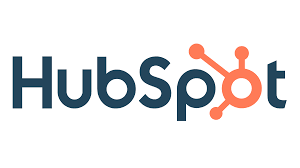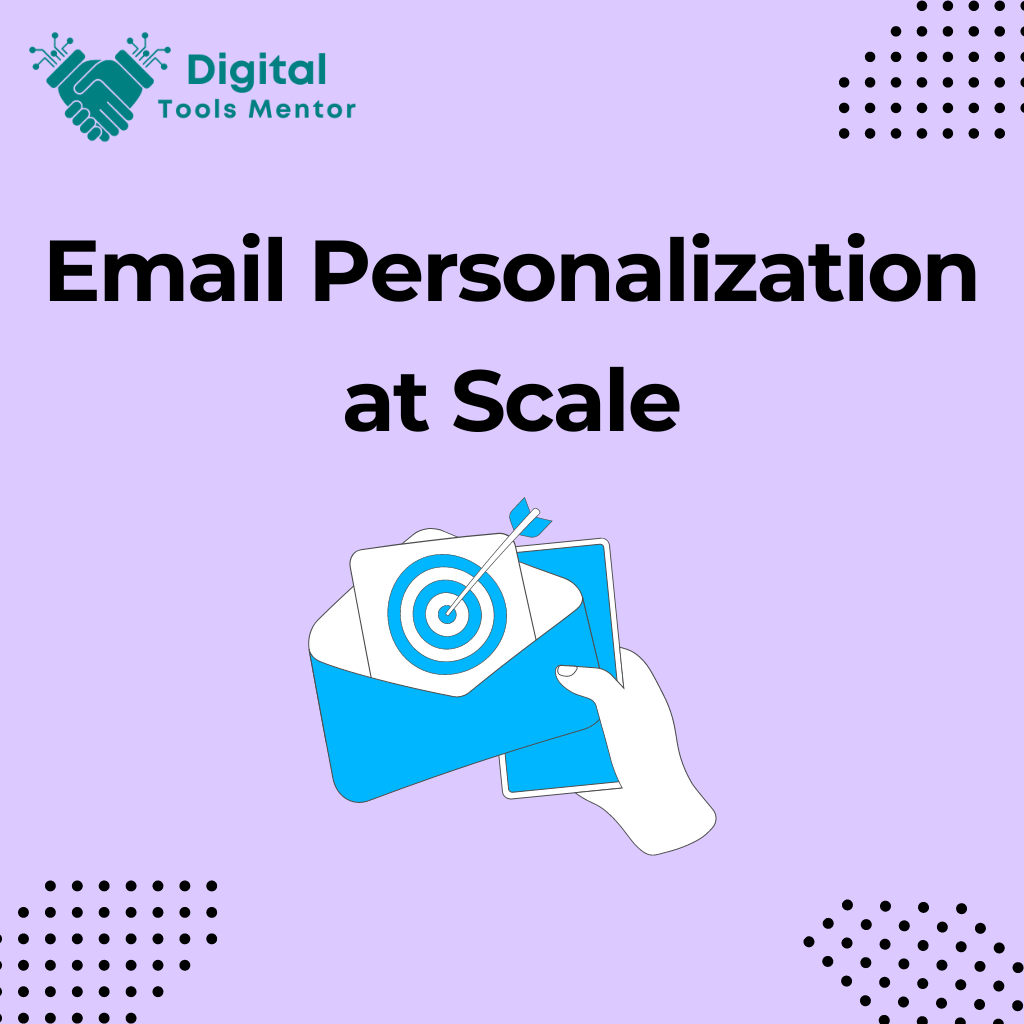Mastering Email Personalization at Scale: Strategies for High-Impact Campaigns
Email personalization is a marketing strategy that tailors messages to individual recipients based on data specific to them. It goes beyond addressing recipients by their names; it involves customizing the content of emails according to the recipient’s behavior, preferences, and past interactions with the brand. This approach transforms generic email blasts into relevant, personalized communications that speak directly to the user.
The significance of email personalization in modern marketing cannot be overstated. In a digital age where consumers are bombarded with information, personalized emails cut through the noise by delivering content that is directly relevant to the individual. This relevance boosts engagement as recipients are more likely to open, read, and interact with emails that reflect their specific interests and needs.
Benefits of Personalization for Engagement and Conversion Rates:
- Increased Open Rates: Personalized email subject lines are 26% more likely to be opened than generic ones. When recipients see their name or a topic they are interested in, they are more likely to perceive the email as worthwhile.
- Higher Click-Through Rates (CTR): Emails that include personalized calls-to-action (CTAs) tailored to the recipient’s interests and past behavior can see a 14% increase in click-through rates. This targeted approach ensures that the offers and content are relevant, prompting more clicks.
- Enhanced Customer Satisfaction: Personalization makes customers feel recognized and valued by the brand, fostering a positive emotional connection and increasing brand loyalty.
- Improved Conversion Rates: Personalized emails deliver 6x higher transaction rates. By providing offers and information that align with the individual’s stage in the customer journey, these emails significantly increase the likelihood of conversion.
- Decreased Unsubscription Rates: When emails are relevant, there’s less chance the recipient will feel overwhelmed or irritated by irrelevant content, leading to lower unsubscription rates.
In conclusion, email personalization is a powerful tool in the arsenal of digital marketers, capable of significantly enhancing the effectiveness of email campaigns. By leveraging detailed customer data to craft personalized experiences, marketers can achieve better engagement, higher conversion rates, and ultimately, stronger customer relationships.
Understanding Your Audience
Successful email personalization starts with a deep understanding of your audience. This requires more than just knowing their names or locations; it involves comprehending their behaviors, needs, and preferences to ensure that your messaging resonates and engages.
Importance of Segmenting Your Audience for Targeted Messaging:
Segmentation is the process of dividing your audience into smaller, more homogenous groups based on specific criteria such as demographics, purchasing behavior, interaction history, or even personal interests. This strategy is crucial because it allows marketers to tailor their messages more precisely, thereby increasing relevance and effectiveness.
- Behavioral Segmentation: Categorizing your audience based on their actions, such as previous purchases, email opens, or website interactions, can help tailor emails to reflect the user’s behavior and likely interests.
- Demographic Segmentation: Utilizing basic demographic information like age, gender, or location can help customize messaging that appeals to different groups’ characteristics and preferences.
- Psychographic Segmentation: Understanding psychological attributes like lifestyle, values, and attitudes can enhance the depth of personalization, speaking directly to what motivates your audience’s decisions.
Tips on Using Data Analytics to Understand Customer Behaviors and Preferences:
Data analytics plays a pivotal role in segmenting and understanding your audience. Here’s how you can leverage it:
- Collect Data Across Touchpoints: Utilize every interaction—be it through websites, social media, customer service, or email responses—to gather comprehensive data. This holistic view helps identify patterns and preferences.
- Use Analytics Tools: Employ robust analytics tools to dive deep into this data. Tools like Google Analytics, CRM software, or specialized email marketing analytics can provide insights into user behaviors and campaign performance.
- Customer Feedback: Regularly solicit feedback through surveys or direct interactions. This direct input can validate your data-driven insights and highlight areas needing more personalized attention.
- Predictive Analytics: Advanced techniques can forecast future behaviors based on historical data. This can be particularly useful for anticipating needs and crafting proactive personalization strategies.
- A/B Testing: Continuously test different segments with varied content strategies to see what works best. This not only refines your understanding of what each segment responds to but also optimizes your personalization efforts for better engagement.
Understanding your audience through detailed segmentation and robust data analytics allows for more targeted and effective email personalization. This not only enhances the user experience by ensuring that each communication is relevant but also significantly boosts the overall efficacy of your email marketing campaigns.
Data Integration Techniques
To achieve a high level of personalization in email marketing, it’s essential to integrate data from multiple sources. This integration provides a comprehensive view of each customer, allowing for more precise and effective personalization strategies. Below, we’ll discuss how CRM systems, behavior tracking tools, and customer feedback mechanisms play crucial roles in this integration process.
Integrating Multiple Data Sources for a Unified Customer View:
- Centralized Data Management: Use a centralized database to combine data from various sources. This could include transaction records, customer service interactions, online behavior data, and demographic information. Centralizing data helps in maintaining a consistent and holistic view of each customer.
- Data Warehousing: Implement a data warehouse to store and manage large amounts of information from different sources. This setup supports complex queries and data analysis, making it easier to segment audiences and personalize communications.
- Data Cleansing: Regularly clean data to remove duplicates and correct inaccuracies. This process ensures that the data used for personalization is accurate and reliable, which is crucial for effective targeting.
Using CRM Systems for Effective Data Integration:
CRM (Customer Relationship Management) systems are invaluable for personalizing email marketing campaigns. They collect and store a wide range of customer data, including contact details, purchase history, customer service interactions, and more.
- Segmentation Features: Most CRM systems offer tools for segmenting customers based on various criteria, which can be directly used for personalized email campaigns.
- Integration Capabilities: Advanced CRM systems can integrate with other tools like email marketing platforms, social media, and e-commerce systems, providing a more comprehensive view of customer behaviors and preferences.
Behavior Tracking Tools to Understand Customer Interactions:
Behavior tracking tools monitor how users interact with your website, emails, and ads. They provide insights into what content captures interest, the path customers take through your site, and what actions they perform.
- Analytics Platforms: Tools like Google Analytics track website visits, page views, and online behaviors, feeding this data back into your CRM or other marketing platforms to enrich customer profiles.
- Email Analytics: Use analytics from your email platform to track open rates, click-through rates, and engagement levels, which can help refine future email personalization efforts.
Leveraging Customer Feedback Mechanisms:
Direct feedback from customers can provide actionable insights that are not always evident through behavioral data alone.
- Surveys and Polls: Regularly engage with your audience through surveys and polls embedded in emails or hosted on your website. This feedback is invaluable for understanding customer satisfaction and areas for improvement.
- Feedback Forms: Implement feedback forms on your website and in email footers. These forms can gather specific insights into customer preferences and experiences.
Integrating these various data sources not only enriches the customer profiles but also enhances the effectiveness of your personalized marketing campaigns. By leveraging CRM systems, behavior tracking tools, and customer feedback mechanisms, you can ensure that your email marketing efforts are as targeted and impactful as possible.
Automation Tools to Scale Personalization
In the realm of email marketing, automation tools are indispensable for achieving personalization at scale. These tools allow marketers to send highly personalized and relevant emails to large audiences without the need for manual intervention at every step. Here, we’ll explore some of the best email marketing automation tools and how they can be used to maintain a personal touch even while automating communications.
Overview of the Best Email Marketing Automation Tools:

- HubSpot: HubSpot is known for its comprehensive CRM capabilities combined with powerful email marketing automation. It allows you to create personalized email workflows based on user behavior, demographic data, and more.
- Mailchimp: Popular among small to medium-sized businesses, Mailchimp offers user-friendly email automation features that include behavior-based emailing, targeted campaigns, and performance analytics to continuously optimize the personalization efforts.
- Klaviyo: Klaviyo excels in segmentation and targeting, particularly for e-commerce businesses. It integrates directly with e-commerce platforms like Shopify and WooCommerce, enabling highly personalized email campaigns based on purchasing behavior and customer interactions.
- ActiveCampaign: This tool stands out for its advanced automation features and AI-powered predictive sending, which schedules emails based on when a user is most likely to engage.
- Marketo: A part of Adobe’s digital marketing suite, Marketo offers robust automation capabilities designed for large businesses and enterprises with complex marketing needs, focusing on multi-channel campaign management and in-depth analytics.
Examples of How Automation Can Help Personalize at Scale Without Losing the Personal Touch:
- Automated Welcome Emails: Set up an automated sequence of welcome emails that feel personal by incorporating the recipient’s name, interests, or recent actions (like signing up or making a first purchase). Each email can be triggered based on specific user actions, ensuring relevance.
- Behavior-triggered Emails: Use behavior tracking tools to set up automated emails that respond to specific actions taken by the user on your website. For example, sending a personalized discount for a product left in a cart or tips related to an article they read on your site.
- Dynamic Content: Employ dynamic content in your emails that changes based on the user’s profile data. For instance, different images, offers, or product recommendations can appear depending on the recipient’s past interactions and demographics.
- Birthday or Anniversary Emails: Automate birthday or membership anniversary emails that offer a personal touch with special offers or messages that celebrate the occasion, showing customers that you remember and value them.
- Segmentation and A/B Testing: Regularly use segmentation to refine your email lists and A/B testing to test different versions of your emails. Automation tools can manage these tests at scale, helping to continually improve the relevance and effectiveness of your campaigns.
- Scheduled Emails: Use data from your CRM to schedule emails at a time when they are most likely to be opened, based on the user’s previous interactions. This thoughtful scheduling shows that you value the user’s time and preferences.
By integrating these automation tools and strategies, you can achieve personalization at scale, sending the right message to the right person at the right time, all while maintaining a personal connection that resonates with each recipient. This not only enhances the customer experience but also drives better engagement and conversions from your email marketing efforts.
Crafting Personalized Email Content
Creating personalized email content is more than just using the recipient’s name; it’s about crafting messages that resonate on a personal level with various segments of your audience. This approach ensures that each email sent feels uniquely tailored to the individual’s preferences, behaviors, and current stage in the customer journey. Here, we will explore strategies for creating compelling email content and the importance of utilizing dynamic content in your campaigns.
Guide on Creating Compelling Email Content for Various Segments:
- Understand Your Segments: Begin by clearly defining and understanding the different segments of your audience. Consider factors like demographics, purchase history, browsing behavior, and engagement levels. This understanding will guide the tone, style, and content of your emails.
- Tailor Your Message: Customize the messaging based on the specific needs and interests of each segment. For instance, new subscribers might receive introductory offers and educational content, while long-term customers might receive loyalty rewards or advanced product insights.
- Use Engaging Subject Lines: Craft subject lines that speak directly to the interests of the segment. A compelling subject line increases open rates and should reflect the personalized content waiting inside.
- Incorporate Relevant Content: Use data-driven insights to include content that is relevant to each segment. For example, if a segment frequently purchases a particular type of product, include related items or content in your emails.
- Call-to-Action (CTA): Tailor your CTAs based on the segment’s previous interactions with your brand. Customize the language and offer in the CTA to align with what you know about the segment’s preferences and behaviors.
- Personal Stories and Testimonials: Include stories or testimonials that resonate with the specific segment. Seeing similar customers benefit from a product or service can significantly boost conversion rates.
Importance of Dynamic Content That Adjusts Based on the Recipient’s Data:
Dynamic content is an advanced email marketing technique where the content of an email changes based on the recipient’s data. This approach allows for highly personalized and relevant messaging within a single campaign.
- Automated Customization: Dynamic content automates the customization process, ensuring that each recipient receives content tailored to their individual profile. This could include tailored product recommendations, specific service updates, or personalized images.
- Enhanced Engagement: By ensuring that the email content is relevant to each recipient’s interests and needs, dynamic content significantly enhances engagement rates. Recipients are more likely to interact with content that feels specifically designed for them.
- Increased Relevance: Dynamic content ensures that the information is current and relevant to the recipient’s recent interactions with the brand. For example, if someone just browsed winter coats on your website, your email could dynamically feature those products or related accessories.
- Scalability: Dynamic content allows marketers to create a single email template that adapts to thousands of customers, each seeing a version of the email that feels personally crafted for them. This scalability makes it a powerful tool for marketers looking to maintain personalization at scale.
- Feedback Loop: Use dynamic content as part of a feedback loop to continually refine and optimize the personalization of your emails based on recipient behavior and engagement data.
Crafting personalized email content and utilizing dynamic content are critical components of a successful email marketing strategy. They ensure that each communication is not only relevant and engaging but also maximizes the potential for conversions by speaking directly to the recipient’s preferences and needs.
Personalization Beyond Just Names
Effective email personalization involves much more than just addressing recipients by their names. It encompasses a range of strategies that tailor content to meet the specific needs and preferences of each recipient, creating a more engaging and satisfying user experience. Here, we explore some advanced personalization tactics, such as personalized recommendations and custom user journeys, and provide case studies to illustrate the effectiveness of these approaches.
Advanced Personalization Tactics:
- Personalized Recommendations:
- Product Suggestions: Utilize customer purchase history and browsing behavior to recommend products that align with their interests. For instance, if a customer frequently purchases books from a specific genre, suggest new releases in that genre.
- Content Customization: Tailor the content of emails based on the user’s past interactions with your website. If they’ve shown interest in specific topics, send them related articles, blogs, or videos.
- Custom User Journeys:
- Segment-Based Email Flows: Develop distinct email marketing flows for different segments. For example, new subscribers receive a welcome series that educates them about your brand, while repeat customers might get loyalty program information.
- Behavioral Triggers: Implement emails triggered by specific behaviors, such as abandoning a cart, which prompts an email with a personalized message reminding them of the items they left behind, possibly with a small discount to encourage completion of the purchase.
- Dynamic Landing Pages:
- When a user clicks on a link in your email, direct them to a landing page that dynamically adjusts content based on the information you have about them, enhancing continuity from email to website.
Case Studies on the Effectiveness of Deep Personalization:
- Case Study 1: Online Retailer
- Background: An online fashion retailer implemented personalized product recommendations based on browsing history and past purchases.
- Implementation: Each email included personalized suggestions, dynamically updated to reflect recent browsing patterns and stock availability.
- Results: The retailer saw a 25% increase in click-through rates and a 10% increase in conversion rates, demonstrating the power of personalized recommendations in driving sales.
- Case Study 2: Travel Agency
- Background: A travel agency used custom user journeys to cater to different types of travelers, such as adventure seekers, luxury travelers, and family vacationers.
- Implementation: Emails were customized based on the destination pages the customers visited on the website and their past bookings.
- Results: The agency reported a 30% increase in booking rates for customers who received personalized journey-based emails, with a significant increase in customer satisfaction and repeat bookings.
- Case Study 3: Subscription Service
- Background: A subscription service for gourmet foods used behavioral triggers to personalize emails.
- Implementation: They sent special discount offers on products similar to those previously purchased right before the typical reorder time.
- Results: This led to a 15% increase in repeat orders and enhanced customer retention rates.
These case studies illustrate how going beyond basic personalization and implementing more sophisticated, data-driven strategies can significantly enhance the effectiveness of email marketing campaigns. By carefully crafting personalized recommendations and customizing user journeys, businesses can create more meaningful connections with their customers, leading to increased engagement and loyalty.
A/B Testing for Personalized Emails
A/B testing, also known as split testing, is a method of comparing two versions of an email to determine which one performs better. This technique is crucial in refining your email personalization strategies, as it allows you to test different elements and see what resonates best with your audience. Here, we’ll explore how to effectively use A/B testing in your personalized email campaigns and which metrics you should track to gauge success and drive improvements.
How to Use A/B Testing to Refine Your Email Personalization Strategies:
- Identify Variables for Testing:
- Begin by identifying elements in your email that you believe could impact recipient engagement. These could include subject lines, email content, images, call-to-action (CTA) buttons, personalization tactics, or even sending times.
- Create Two Variants:
- Develop two variants of the email, each with one element changed. For example, test two different subject lines to see which leads to a higher open rate. Ensure that all other aspects of the emails are identical, so you are only testing the impact of one variable at a time.
- Segment Your Audience:
- Divide your email list into two random but statistically significant segments. This segmentation ensures that the test results are reliable and that the differences in performance can be attributed to the changes in the email.
- Run the Test:
- Send variant A to one segment and variant B to the other. Allow the campaign sufficient time to gather results, typically until enough data has been collected to achieve statistical significance.
- Analyze the Results:
- Compare the performance of the two variants based on the metrics you’ve identified as important. Determine which variant performed better and by what margin.
- Implement Learnings:
- Use the insights gained from the test to optimize future emails. Implement the winning element in upcoming campaigns and consider testing other variables based on these findings.
What Metrics to Track and How to Interpret Them for Better Personalization:
- Open Rate:
- This measures the percentage of recipients who open an email. High open rates generally indicate effective subject lines or sender reputation. Use A/B testing to find which subject lines capture attention and personalize accordingly.
- Click-Through Rate (CTR):
- CTR measures how many people clicked on links within the email. It is crucial for assessing the effectiveness of your message and CTA. Test different formats or personalized content to see what drives more clicks.
- Conversion Rate:
- This metric indicates the percentage of recipients who clicked on a link and completed a desired action, such as making a purchase or signing up for a webinar. It helps evaluate the effectiveness of the email in driving measurable actions.
- Bounce Rate:
- Track how many emails were not successfully delivered. A high bounce rate could affect the overall health of your email list and deliverability rates.
- Unsubscribe Rate:
- Monitor how many recipients unsubscribe after receiving an email. This can indicate whether your content is resonating with your audience or if it’s driving them away.
- Revenue Per Email:
- If applicable, analyze the revenue generated from each version of the email. This can be especially telling in determining the economic impact of different personalization strategies.
By systematically implementing A/B testing and analyzing these key metrics, you can continuously refine your email personalization strategies, ensuring that your campaigns remain effective and resonate with your audience. This ongoing process of testing and optimization is essential for maintaining an engaging and profitable email marketing program.
Privacy Concerns and Ethical Considerations
In the world of email marketing, personalization must be balanced with privacy and ethical considerations. As businesses collect and utilize more detailed customer data to personalize communications, they must also ensure they’re respecting and protecting individual privacy. Understanding this balance and adhering to data protection laws like the General Data Protection Regulation (GDPR) is essential for maintaining trust and compliance. Here’s a detailed exploration of these issues and best practices for navigating them effectively.
Understanding the Balance Between Personalization and Privacy:
- Transparency: Always be clear with your customers about what data you are collecting and how it will be used. Transparency builds trust and assures customers that their personal information is handled with care.
- Consent: Obtain explicit consent from recipients before collecting their data. This means providing users with a clear choice to opt-in to your email marketing and making it easy for them to understand what they are agreeing to.
- Data Minimization: Collect only the data necessary for the personalization you intend to achieve. Avoid the temptation to gather more information than needed, as this can increase privacy risks and management complexity.
- Respect for Privacy: Provide customers with easy-to-use options for managing their privacy preferences, including the ability to access, correct, or delete their data. This not only complies with privacy laws but also gives users control over their information, enhancing their trust in your brand.
Best Practices for Maintaining Compliance with Data Protection Laws like GDPR:
- Data Protection by Design and by Default: Integrate data protection into your email marketing systems and processes from the outset. This approach ensures privacy is considered at every stage of personal data processing.
- Regular Audits: Conduct regular audits of your data practices to ensure compliance with privacy laws and to discover any potential security vulnerabilities. This is also a chance to review whether the data you hold is still necessary and accurate.
- Staff Training: Educate your staff about their obligations under GDPR and other relevant data protection laws. Make sure everyone involved in handling personal data understands the importance of protecting customer privacy and how to do so effectively.
- Use of Encrypted and Anonymized Data: Where possible, anonymize personal data to reduce the risks associated with data breaches. When anonymization is not possible, ensure that personal data is encrypted to protect it from unauthorized access.
- Privacy Policy: Keep your privacy policy up to date and ensure it is easily accessible. The policy should detail your data protection practices and explain how users’ data is collected, used, stored, and shared.
- Data Processing Agreements: If you use third-party services (like email marketing platforms), ensure they comply with GDPR. This typically involves signing a data processing agreement that obligates them to protect the data they handle on your behalf.
- Incident Response Plan: Have a clear plan in place for responding to data breaches, including how to notify affected individuals and regulatory bodies in compliance with GDPR requirements.
By following these guidelines, businesses can enhance their email personalization efforts while respecting user privacy and adhering to stringent data protection laws. This not only avoids legal pitfalls but also fosters a strong, trust-based relationship with customers, ultimately supporting the success of your email marketing initiatives.
Measuring the Impact of Personalization
Effectively measuring the impact of personalized email campaigns is crucial for understanding their effectiveness and optimizing future communications. To do this, marketers need to focus on specific key performance indicators (KPIs) that reflect the success of personalization efforts. This section outlines the essential KPIs for personalized emails and discusses how to use data to continuously refine your personalization strategies.
Key Performance Indicators (KPIs) to Assess the Effectiveness of Personalized Email Campaigns:
- Open Rate: This KPI measures the percentage of recipients who open an email. A higher open rate often indicates that your subject lines are well personalized and resonate with your audience.
- Click-Through Rate (CTR): CTR is the percentage of email recipients who clicked on one or more links within the email. It helps gauge the effectiveness of your message content and the appeal of your personalized calls-to-action.
- Conversion Rate: This measures the percentage of recipients who clicked on a link within the email and completed a desired action, such as making a purchase or filling out a form. Higher conversion rates suggest that your personalization is effectively motivating recipients to take action.
- Bounce Rate: Track how many of your personalized emails are not delivered. A high bounce rate can indicate issues with email addresses or with how your emails are being perceived by servers (potential spam).
- Unsubscribe Rate: This is the rate at which people are opting out of your email list after receiving your emails. While some churn is normal, a high unsubscribe rate in a personalized campaign could indicate that the content is not resonating or is too intrusive.
- Revenue per Email: This is especially important for e-commerce marketers. It measures the amount of revenue generated per email sent, helping you understand the direct financial impact of your personalized email campaigns.
- Customer Retention Rate: For campaigns aimed at existing customers, measure how effective personalization is at keeping your customers engaged and making repeat purchases.
- Segment-specific Engagement: Analyze performance based on different customer segments to see which types of personalization work best for each segment.
Using Data to Continuously Improve Your Approaches:
- Regular Review of KPIs: Set a schedule to regularly review these KPIs. This will help you understand trends over time and identify which personalization techniques are most effective.
- Segmentation Refinement: Use the insights gained from KPIs to refine your segmentation strategies. Look for patterns in which segments respond best to what types of personalization.
- A/B Testing Continuation: Continuously run A/B tests on different elements of your emails, including the degree of personalization. This helps in understanding what works best and in adapting your strategies based on solid data.
- Feedback Collection: Encourage and collect feedback directly from your audience regarding their preferences and perceptions of your personalized emails. This qualitative data can provide insights that quantitative data cannot.
- Integration of New Data: As new customer data comes in, integrate this into your personalization strategies. Update customer profiles continuously and leverage any new information to enhance personalization.
- Adapt to Technology and Trends: Keep abreast of new technologies and trends in email marketing that can enable deeper or more efficient personalization. Implement these where applicable to stay competitive.
By focusing on these KPIs and using data to inform ongoing strategy adjustments, you can not only measure but also continuously enhance the effectiveness of your personalized email campaigns, ensuring they remain relevant and impactful in achieving your marketing goals.
Explore 23 Best Email Marketing Platforms in 2025
Future Trends in Email Personalization
As technology continues to evolve, the future of email personalization is set to become even more sophisticated and effective, driven largely by advancements in artificial intelligence (AI) and machine learning (ML). Here, we explore some of the most exciting predictions for the future of email personalization and how brands can stay ahead by adopting these innovative technologies.
Predictions for the Evolution of Email Personalization with AI and Machine Learning:
- Predictive Personalization:
- AI and ML will enhance the ability to predict customer behaviors and preferences more accurately. This will allow marketers to send emails that are not only personalized based on past behaviors but also anticipate future needs and interests, leading to even higher engagement and conversion rates.
- Dynamic Content Optimization:
- Machine learning algorithms will continuously analyze how different segments interact with email content, automatically adjusting messages in real-time to optimize for engagement. This means that the content of an email could change based on when and where it is opened, providing the most relevant and personalized experience possible.
- Automated Content Creation:
- AI will play a significant role in content generation, using natural language processing to create highly personalized and contextually relevant messages without human intervention. This could greatly reduce the time and resources needed for content creation while maintaining a high level of personalization.
- Enhanced Behavioral Segmentation:
- As AI technologies evolve, they will be able to create even more granular segments based on complex behavioral patterns and micro-segments. This will allow for ultra-specific targeting, enhancing the effectiveness of personalized campaigns.
- Emotion Detection and Personalization:
- Future personalization techniques might include emotion detection from user interactions and feedback, enabling emails to be personalized not just by actions but also by the emotional states of the consumers. This could involve adjusting the tone, content, and timing of messages to match the recipient’s mood and emotional needs.
How Brands Can Stay Ahead by Adopting Innovative Technologies:
- Invest in AI and ML Capabilities:
- To stay ahead, brands should consider investing in AI and ML technologies and expertise. This could be through in-house development, partnerships with tech companies, or using advanced email marketing platforms that incorporate these technologies.
- Continuous Learning and Adaptation:
- Marketers need to embrace a mindset of continuous learning and experimentation. The field of AI is rapidly evolving, and staying updated with the latest tools and techniques is crucial.
- Focus on Data Quality and Integration:
- AI and ML algorithms require high-quality data to function effectively. Brands should focus on integrating and cleansing their data across all customer touchpoints to feed accurate data into AI systems.
- Ethical Considerations:
- As personalization techniques become more advanced, it’s important for brands to consider the ethical implications, particularly around privacy and transparency. Ensuring that personalization efforts are transparent and comply with data protection laws will be critical.
- Customer-Centric Strategies:
- Ultimately, the goal of adopting new technologies should be to enhance customer satisfaction and engagement. Brands should ensure that technological advancements are used in ways that genuinely add value to the customer experience.
By understanding and preparing for these future trends, brands can position themselves to take full advantage of the next wave of advancements in email personalization, ensuring they remain competitive and relevant in the evolving digital landscape.




